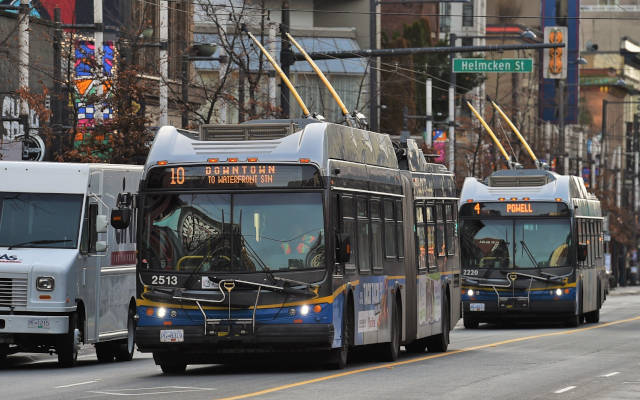19 Sep 2025
Original Backlink
The Electric Bus You Thought Was Dead - But Isn't
By EVWorld.com Si Editorial Team

Electrical trolley buses using IMC system plying the urban streets of Vancouver, BC
By EVWorld.com Si Editorial Team
A Forgotten Technology Finds New Relevance
Trolleybuses, once dismissed as outdated, are quietly re-emerging as a strategic solution for urban electrification. With the advent of in-motion charging (IMC), these wire-connected electric buses are shedding their limitations and offering cities a flexible, cost-effective alternative to battery-electric fleets.In-Motion Charging: A Hybrid Model
IMC technology allows trolleybuses to charge while connected to overhead wires and operate off-wire using onboard batteries. This hybrid approach eliminates the need to electrify entire routes, reducing infrastructure costs and visual clutter. Buses can travel 10–20 kilometers off-wire, making them suitable for mixed urban environments.Cost and Revenue Considerations
Compared to battery-electric buses, trolleybuses with IMC require smaller battery packs, reducing vehicle weight and maintenance costs. Infrastructure investments are lower when cities can reuse existing wire networks. However, upfront costs for wire installation and fleet modernization can be significant, and funding often depends on constrained municipal budgets or national climate grants.Ideal Deployment Scenarios
Trolleybuses are especially effective in:- Cities with steep terrain where battery-only buses struggle
- Dense urban corridors with high-frequency service
- Municipalities with legacy overhead wire infrastructure
- Regions with stable electricity grids and renewable energy sources
Public Acceptance and the Private Car Challenge
While trolleybuses offer environmental and operational benefits, public perception remains mixed. In many cities, private car use is deeply entrenched, and transit investments face political resistance. Trolleybuses are often seen as old-fashioned, despite their modern capabilities. Successful deployment depends on strong public engagement, visible improvements in service quality, and integration with broader mobility strategies.Global Momentum
Cities like Vancouver, Mexico City, Zurich, and Salzburg are investing in IMC-equipped trolleybuses. Vancouver's TransLink has ordered over 100 new units with options for hundreds more. European cities are upgrading fleets to meet climate targets without overhauling entire transit systems.Conclusion: A Smart Leap Sideways
In the race to electrify public transit, trolleybuses offer a pragmatic middle ground. They are not a step backward but a strategic leap sideways—leveraging proven infrastructure and modern technology to deliver clean, reliable mobility. As climate deadlines loom, cities may find that the electric bus they forgot about is exactly the one they need.Sources
- The Return of the Electric Bus You Forgot About – Medium
- Solaris to Supply Trolleybuses to Vancouver – Solaris Bus & Coach
- Trolleybus Revival – UITP
Original Backlink
Views: 787
Articles featured here are generated by supervised Synthetic Intelligence (AKA "Artificial Intelligence").
